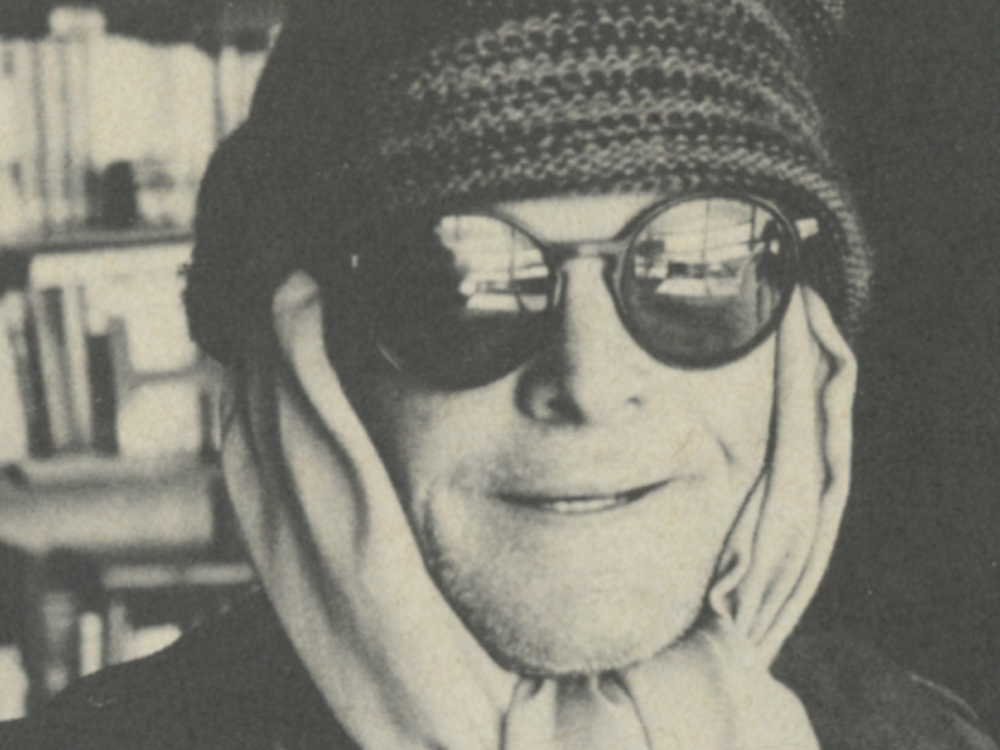In March, The Paris Review launched The Art of Distance, a newsletter highlighting unlocked archive pieces that resonate with the staff of the magazine, quarantine-appropriate writing on the Daily, resources from our peer organizations, and more. Read Emily Nemens’s introductory letter here, and find the latest unlocked archive pieces below.
“Record collectors love to spend long hours trawling through boxes and bins in pursuit of the rarity, the one-off, the perfect B side, but I think this same obsession with the archival can apply to literature lovers as well. There’s a triumphant thrill to be found in this hunt for the unknown, and as someone who spends a lot of time sifting through the Paris Review archive as part of my job, I’ve been lucky enough to feel it often. Wait a minute, I realize, we have an Art of that?! Those writers took part in a roundtable in the eighties, the transcript of which was published in a back issue? Colleagues who’ve received many a multi-exclamation-mark’d message from me can attest—there are some buried treasures to be unearthed on theparisreview.org! In that spirit, this week’s Art of Distance lifts the paywall on a series of one-offs, rarities, and uncategorizable pieces from the Paris Review archive. If you find yourself looking for something a little different to read, perhaps one of the following will be a welcome discovery.” —Rhian Sasseen, Engagement Editor
Although The Paris Review is known for its Writers at Work interviews, if you read enough back issues you’ll find that the magazine has also published a number of interviews that don’t necessarily fit within the usual “Art of … ” rubric. There’s the one and only Art of the Musical, with Stephen Sondheim, from the Spring 1997 issue, for instance, or this “composite interview” with Pablo Picasso from Summer–Fall 1964. Or this Winter 2016 interview with the critic Albert Murray (a close friend of Ralph Ellison’s), who discusses the history of the Black American literary tradition. Or 1993’s “A Humorist at Work,” with Fran Lebowitz; I dare you to read it without laughing out loud.
Art portfolios, too: if you’d like to see Andy Warhol’s party shots of William Burroughs, James Baldwin, Gore Vidal, Shirley MacLaine, Allen Ginsberg, and more, then you’re in luck. Or there’s this selection of work from the manga artist Yoshihiro Tatsumi, known for his antiheroes, in Spring 2006. Speaking of images—poetry and art are generally kept somewhat separate in the Review, but the Summer 2017 issue paired a selection of poetry from Jeffrey Yang with paintings by Kazumi Tanaka. (Such collaborations have appeared in other issues, too, such as this one from Peter Cole and Terry Winters.)
Or how about a philosophical essay by Simone Weil on the problem of religion, published in the second issue? If that doesn’t sate your need to ponder existence, there are also these texts by Flaubert, written on the occasion of two deaths in his life and appearing for the first time in English in the Summer 2007 issue. And here’s something fun you probably hadn’t thought to look for: a Trainspotting glossary from Irvine Welsh, published in Spring 1996.
One of the wonderful things about little magazines like The Paris Review is that they can so often be the site of the odd, the curious, and the unknown. Round out your journey with this essay by George Wickes on the history of the little magazine and the birth of Modernism as we know it, published in Summer 1969.
Sign up here to receive a fresh installment of The Art of Distance in your inbox every Monday.
from The Paris Review https://ift.tt/2Cvb1GU

Comments
Post a Comment